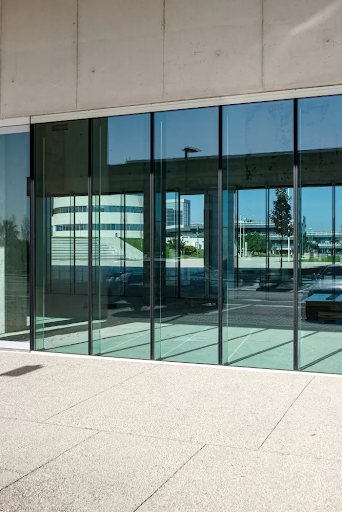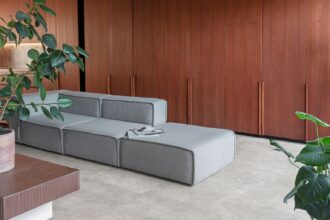When considering window tinting, many people assume that all tint films serve the same purpose. However, whether you’re looking for Building Tinted Malaysia solutions or car window tinting, it’s important to understand the key differences between the two. Each type of window tint is designed to meet specific needs, environments, and regulations, making it crucial to choose the right product for your application. In this article, we’ll explore the distinctions between building window tinting and car window tinting, helping you make informed decisions that suit your needs.
What is Building Window Tinting?
Building window tinting refers to the application of specially designed films on the glass surfaces of homes, offices, and commercial buildings. The purpose is to improve comfort, increase energy efficiency, enhance privacy, and protect interiors from harmful UV rays. In Malaysia, building tinted films are increasingly popular as a practical solution to combat the tropical heat and intense sunlight.
Key benefits of building tinted windows include:
- Heat reduction: Building tints help lower indoor temperatures by reflecting and absorbing solar heat, which reduces air conditioning costs.
- UV protection: They block up to 99% of harmful ultraviolet rays, preventing furniture, flooring, and artwork from fading.
- Glare reduction: Window films reduce glare on screens and reflective surfaces, improving comfort and productivity in workplaces.
- Privacy: Depending on the type of film used, they can enhance privacy by limiting visibility from the outside without sacrificing natural light.
- Safety: Some films provide additional safety by holding shattered glass together in case of breakage.
What is Car Window Tinting?
Car window tinting involves applying specialized films to vehicle windows to improve comfort, privacy, and safety for drivers and passengers. In Malaysia, car window tinting is also popular due to the country’s hot and sunny climate, providing relief from intense heat and UV exposure during daily commutes.
The main advantages of car window tinting include:
- Heat rejection: Automotive tints significantly reduce the amount of heat entering the vehicle, making driving more comfortable and protecting the car’s interior.
- UV protection: Just like building tints, car films block harmful UV rays that can damage skin and deteriorate the vehicle’s upholstery.
- Privacy and security: Tinted windows obscure the view inside the vehicle, reducing the risk of theft and providing more privacy for passengers.
- Glare reduction: Tinting helps reduce sun glare, improving driving safety.
- Aesthetic appeal: Many drivers prefer tinted windows for the sleek and modern look they provide.
Key Differences Between Building and Car Window Tinting
1. Purpose and Functionality
While both building and car window tints serve to reduce heat, block UV rays, and provide privacy, the specific requirements for each application differ. Building tints prioritize energy efficiency and comfort in static environments, while car tints focus more on driver comfort, safety, and compliance with road regulations.
2. Material and Film Composition
The materials used for building and car window tints differ to suit their distinct environments:
- Building tints are typically thicker and more durable to withstand harsh weather conditions like rain, wind, and temperature fluctuations. They may also have coatings to enhance reflectivity and energy-saving properties.
- Car tints are engineered for automotive glass and designed to flex with the vehicle’s movement and resist scratches from frequent use and cleaning.
3. Installation Techniques
Installing building window tints usually involves larger glass panels and requires specialized equipment and techniques for smooth application without bubbles or creases. Car window tint installation is more intricate due to smaller, curved surfaces and often involves cutting the film precisely to fit each window shape.
4. Legal Regulations
In Malaysia, there are strict regulations governing car window tinting, including limits on the level of darkness (Visible Light Transmission or VLT) allowed on different vehicle windows to ensure safety and visibility on the road. Building window tinting, however, is not usually subject to such regulatory restrictions but may need to comply with building codes and energy efficiency standards.
5. Cost Considerations
Building window tinting tends to be a larger-scale investment due to the size of the glass areas involved and the specific performance features required. Car window tinting is generally less expensive but varies based on the type of film, the vehicle’s size, and labor costs.
Why Choose Professional Building Tinted Malaysia Services?
When investing in Building Tinted Malaysia services, professional expertise is essential to ensure quality results. Proper film selection, expert installation, and compliance with local standards all contribute to the durability and effectiveness of your window tint.
A reputable provider will offer:
- Consultation: Assessing your property’s needs to recommend the best film type.
- High-quality materials: Using premium films that provide maximum heat rejection, UV protection, and longevity.
- Skilled installation: Ensuring a bubble-free, smooth finish that lasts.
- After-sales support: Offering maintenance advice and warranties for peace of mind.
Conclusion
Although building window tinting and car window tinting share similar objectives—such as heat reduction, UV protection, and privacy—their differences lie in materials, applications, legal requirements, and installation processes. Understanding these distinctions will help you make the best choice for your property or vehicle.
If you’re looking for expert Building Tinted Malaysia solutions, partnering with a trusted provider ensures you gain maximum benefits, including energy savings, improved comfort, and long-lasting protection. Whether for your home, office, or vehicle, selecting the right window tint film tailored to your specific needs is key to achieving optimal results.

















